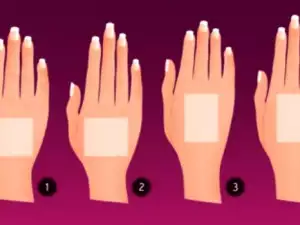Leg gestures are most commonly used when a person is trying to put up a barrier between them and the person next to them, writes Australian author Allan Pease in his book Body Language.
The most popular leg gesture is when they are crossed. In most cases, the right leg goes over the left. By definition, this is a sign of hostility, a negative attitude, reservedness and uncertainty.
Often however, this pose is assumed by people who are forced to sit in a chair for an extended period and they get uncomfortable. In that case, we must not interpret the gesture according to the theory of Body Language because the persons were forced to cross their legs due to the circumstances, not due to their emotions.
When we put one leg over the other, forming the number 4, we give a nonverbal sign to the other person that we are ready for an argument. A similar leg posture is assumed only by people who have a competitive attitude and are prepared to defend their opinion.
If a person forms the number 4 with their legs crossed and is holding onto them with their hands, know that they are ready to explode at any moment. Oftentimes, the person's reactions are hurried or they are ready to argue out of spite.

If in the same posture their hands are behind their back, the person portrays confidence and authority. Generally, this posture is used by lawyers, bank managers or large company owners.
A universal pose indicating a person's readiness to listen is when their legs are not crossed and their hands touch one of their thighs or knees. And when a person is holding onto their chair, it means that the conversation does not interest them and they want to leave.
The gesture of crossing the legs when standing, when one leg is in front of the other and standing on its toes, is used by a person who barely knows the other individual. In most cases, when the people get to know each other, they unlock this posture.
Whenever a person crosses their ankles, they are trying to suppress an emotion - nervous tension, a negative attitude or fear, that they do not want the other person to notice.
If a person puts their heel behind the knee of their other leg, they are taking on a defensive stance. This posture is characteristic of timid, shy people.











